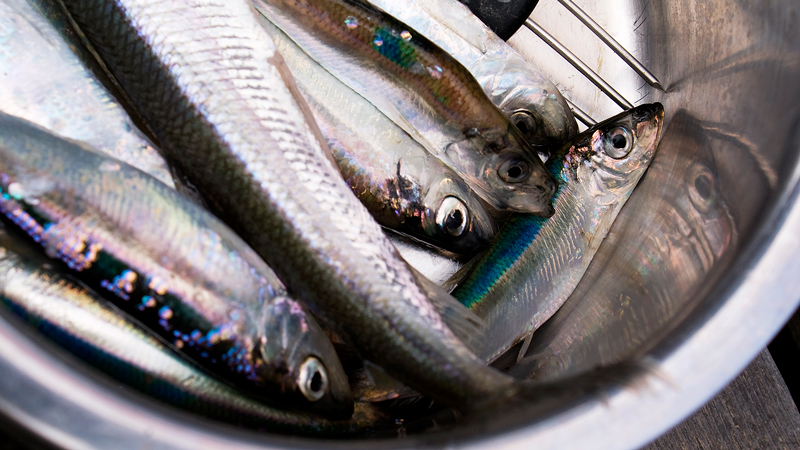
Press release 16 September 2024 from the Government's analysis, assessment and research activities (VN TEAS), Ministry for Agriculture and Forestry and Government Communications Department
It is useful to eat domestic fish, because at the current consumption levels of Finns, the health benefits of fish consumption outweigh the harms associated with contaminant intake in all age groups. Increasing fish consumption from current levels would also be beneficial to the health of the population. In particular, the consumption of under-exploited fish species such as common roach should be increased. The results are from a research project on the concentrations of nutrients and contaminants accumulated in fish from domestic fish species and products.
The project measured levels of dioxins and PCBs, PFAS, brominated diphenyl ethers, mercury and inorganic arsenic in domestic fish species and products. Excessive intake of these contaminants can lead to various health problems such as reduced intelligence or fertility. The levels of vitamin D and omega-3 fatty acids were also measured.
The challenge in the use of wild fish in Finland is the environmental accumulation of harmful substances in some species, which has partly limited the usefulness of fish for food or feed and has also reduced the assessment of the state of the marine environment in our regional waters. Their concentrations have led to recommendations to the most sensitive groups of the population to restrict the consumption of certain fish species. Until now, the use recommendations have not taken into account PFAS compounds in fish, which have only been identified as a health threat in recent years, and the information generated by this project was needed to update the recommendation for safe use of fish.
Contaminant levels in domestic fish were mostly below maximum levels detailed in EU legislation, and dioxin levels are on a downward trend. Contaminant levels in farmed fish are lower than in wild fish of the same species. Among the scarce fish species, increased consumption of roaches from inland waters would be justified both in terms of low contaminant levels and ecologically sustainable fishing. In this respect, the results support the programme for the promotion of domestic fish. However, the maximum levels of PFAS were partly exceeded in herring caught in the Archipelago Sea and Bothnian Sea in 2022-23, and the upward trend in PFAS levels would require further action in Finland as well.
The study also measured the nutrients (vitamin D and omega-3 fatty acids) in fish, with vitamin D being the most abundant in perch and bream caught from the Baltic Sea, and omega-3 fatty acids most abundant in Baltic herring and vendace. According to the risk-benefit assessment, at consumption levels based on the most recent national food consumption surveys, the health benefits of fish consumption, including Baltic herring, outweigh the harms associated with contaminant intake in all age groups in Finland. Health benefits include reduced overall mortality and reduced risk of certain cancers with increased intake of fish nutrients.
Based on health effects, the greatest health benefits from fish consumption are for people who are middle-aged or older. The health benefits also outweigh the harms for the most sensitive consumer groups, i.e. young children and pregnant or breastfeeding women, but the difference is relatively small, especially for children under 9 years of age. It would therefore be useful for the most sensitive consumer groups to follow the Finnish Food Authority’s recommendation for safe use of fish and to target their fish consumption towards those fisheries and species with the lowest contaminant levels. Local food authorities can provide more specific regional guidance on the use of fish where necessary.
Fish concentration data are also submitted to the European Food Safety Authority (EFSA), through which they are available to support EU legislative work.
Further information:
Research professor Johanna Suomi, Finnish Food Authority, tel. +358 29 520 5034, johanna.suomi@ruokavirasto.fi (project leader)
Senior specialist Eeva Saarisalo, Ministry for Agriculture and Forestry, p. +358 29 516 2366, eeva.saarisalo@gov.fi (chairperson of the steering group)
Head of research Panu Rantakokko, Finnish institute for Health and Welfare, tel. 029 524 6395, panu.rantakokko@thl.fi (dioxins and PFAS in fish)
Senior researcher Janne Järvinen, Finnish Food Authority, tel. +358 29 520 4352, janne.jarvinen@ruokavirasto.fi (mercury concentrations in fish)
Researcher Juha-Matti Pihlava, Natural Resources Institute Finland, tel. +358 29 532 6439, juha-matti.pihlava@luke.fi (vitamin D levels in fish)
Senior researcher Heidi Leskinen, Natural Resources Institute Finland, tel. +358 29 532 6327, heidi.leskinen@luke.fi (fatty acid concentrations in fish)
Researcher Ville Junttila, Finnish Environment Institute, p. +358 46 923 0941, ville.junttila@syke.fi (state of marine environment and other water bodies)
Senior researcher Jari Raitaniemi, Natural Resources Institute Finland, p. +358 29 532 7685, jari.raitaniemi@luke.fi (fish stocks)
The publication has been produced as part of the implementation of the Government's 2022 analysis, assessment and research activities. The content of the reports published in the Intelligence and Research publication series is the responsibility of the producers of the information and does not necessarily represent the views of the Government. For further information: https://tietokayttoon.fi
EU Fish IV report (in Finnish)
Policy Brief (in Finnish)